Tag Archives for " general aviation autopilot "
Garmin Autoland Named 2020 Finalist for Esteemed Robert J. Collier Trophy
Our ground-breaking Autoland system — part of the AutonomiTM family of autonomous safety-enhancing technologies — was selected as a 2020 Robert J. Collier Trophy finalist by the National Aeronautic Association (NAA). For over a century, the Collier Trophy has been the benchmark of aerospace achievement and is awarded annually to recognize “the greatest achievement in aeronautics or astronautics in America.” Autoland is the world’s first certified system of its kind with the ability to activate during an emergency situation to autonomously control and land an aircraft without human intervention1.
“We are extremely honored and proud that Autoland has been selected as a finalist for the renowned Robert J. Collier Trophy,” said Phil Straub, Garmin executive vice president and managing director, aviation. “The extensive history of this award has recognized some of the most impactful achievements in aviation, and we are humbled to have Autoland considered among them. Being chosen as a finalist for the greatest aerospace achievement of 2020 would not be possible without the steadfast dedication of the Garmin team, as well as Piper, DAHER, and Cirrus, in addition to the regulatory agencies working closely with us to bring this potential life-saving technology to market.”
In the event of an emergency such as pilot incapacitation, a passenger can activate Autoland to land the aircraft with a simple press of a dedicated button, should the pilot no longer be able to perform their duties as pilot in command. Autoland can also activate automatically if the system detects no pilot interaction. Once activated, the system immediately calculates a flight path to the most suitable airport and runway, while avoiding terrain and adverse weather, initiates a stabilized approach and automatically lands the aircraft.
Piper Aircraft received the first FAA Type Certification of Garmin Autoland on the G3000® equipped M600 SLS in May 2020. In July 2020 DAHER completed the first European Union Aviation Safety Agency (EASA) certification and the second FAA certification of Autoland on the G3000® equipped TBM 940. Cirrus Aircraft, the 2017 Collier Trophy winner, certified the first jet aircraft with Autoland in August 2020, the Vision Jet equipped with Perspective Touch+.
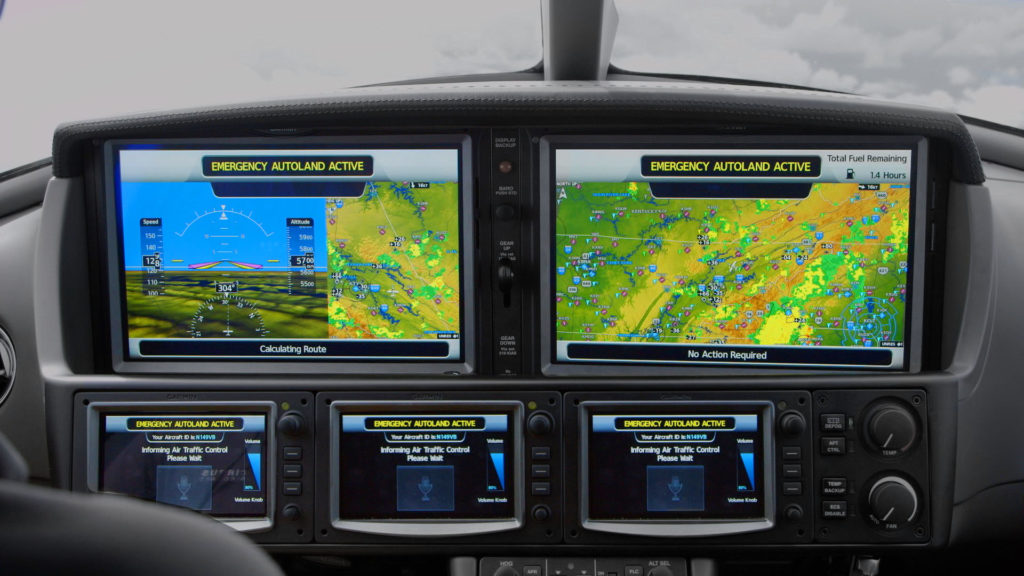
We are committed to building on the mission of bringing innovations to the industry, furthering the vision of Wilbur and Orville Wright, whose resolve and commitment to heavier-than-air flight sparked the current-day modern transportation movement. Several significant accomplishments and innovations of previous Collier Trophy winners helped lay the groundwork for what is now Autoland, including: the Global Positioning System Team in 1992; the Radio Technical Commission for Aeronautics and the development of the modern-day ATC system in 1948; Elmer Sperry’s development of the initial autopilot building blocks; and William Lear’s development of the first jet autopilot in 1949. We believe this is only the beginning, as it continues to innovate and make advances to create new and exciting possibilities for air travel in the future.
The NAA is a non-profit, membership organization devoted to fostering America’s aerospace leadership and promoting public understanding of the importance of aviation and space flight to the United States. The NAA’s Collier Trophy Selection Committee will meet virtually in June and publicly announce the 2020 Collier Trophy award winner following their selection.
For additional information about Autoland and the Garmin Autonomi family of automated flight technologies, visit www.garmin.com/Autonomi.
1.See Garmin.com/ALuse for Autoland system requirements and limitations.
The post Garmin Autoland Named 2020 Finalist for Esteemed Robert J. Collier Trophy appeared first on Garmin Blog.
https://www.garmin.com/en-US/blog/aviation/garmin-autoland-named-2020-finalist-for-esteemed-robert-j-collier-trophy/
Garmin GFC 600 Digital Autopilot Approved for Select King Air C90 and E90 Aircraft
Our GFC 600 digital autopilot has received FAA STC approval in select Beechcraft King Air C90 aircraft and E90 aircraft1. GFC 600 is optimized for turbine aircraft, delivering superior in-flight characteristics and new operational capabilities such as Vertical Navigation (VNAV), automatic Course Deviation Indicator (CDI) switching when paired with a GTN Series navigator, enhanced go-around capability and much more.
600 digital autopilot has received FAA STC approval in select Beechcraft King Air C90 aircraft and E90 aircraft1. GFC 600 is optimized for turbine aircraft, delivering superior in-flight characteristics and new operational capabilities such as Vertical Navigation (VNAV), automatic Course Deviation Indicator (CDI) switching when paired with a GTN Series navigator, enhanced go-around capability and much more.
The GFC 600 certification for the Beechcraft King Air C90 and E90 provides owners and operators an autopilot upgrade that boasts superior integration potential with G600 and G600 TXi flight displays, the GI 275 electronic flight instrument, as well as the GTN and GTN Xi Series of navigators. The self-contained autopilot controller incorporates backlit keys and a bright, sunlight readable display that depicts autopilot status and mode selection. An intuitive built-in control wheel also provides convenient adjustment of aircraft pitch, airspeed and vertical speed modes. When the level button is selected, the aircraft automatically returns to straight-and-level flight.

Environmentally hardened autopilot servos designed for harsh operating conditions contain brushless DC motors offering improved performance and reducing maintenance requirements when compared to decades-old servo designs on the market today. In addition, these servos are optimized for turbine aircraft by offering more torque to help better command and respond to control demands required of turbine aircraft.
Standard mark-width design of the GFC 600 mode controller ensures the autopilot controller allows for routine installation into the aircraft’s avionics stack. Autopilot mode annunciation is available on the G600 TXi touchscreen glass flight display, as well as the G600 flight display. The addition of an optional autopilot annunciator panel also displays the selected autopilot mode in the pilot’s primary field of view and retains an identical footprint of third-party autopilot annunciators on the market.
In addition to traditional autopilot capabilities such as altitude hold, vertical speed and heading modes, the GFC 600 also includes:
- Premium functions and advanced capabilities such as altitude pre-select2 and indicated airspeed hold mode
- Pilots can select, couple and fly various instrument approaches, including GPS, ILS, VOR, LOC and back course approaches3
- Built-in GPS roll steering capability eliminates the need for external roll steering converters, allowing for smoother navigation tracking when installed with a compatible navigator
- Level Mode button, which automatically engages the autopilot to restore the aircraft to straight and level flight
- Underspeed protection helps prevent the pilot from stalling the aircraft
- Overspeed protection helps prevent the pilot from exceeding aircraft maximum speed (VNE)
- Yaw Damping (YD) mode minimizes yawing oscillations while also helping to maintain coordinated flight
- Flight Director command bars can be displayed on flight display such as the G600 and G600 TXi
- Pilots can fly coupled ‘go-arounds’ during missed approach sequencing. A remotely-installed go-around button commands the Flight Director to display the appropriate pitch attitude required for the missed approach procedure and activates a loaded missed approach when paired with a GTN 650/750 or GTN 650Xi/750Xi navigator
- Included pitch-trim servo adds automatic trim and improved manual electric trim
- Control wheel steering is available, which allows the pilot to adjust pitch, roll, altitude hold, vertical speed or airspeed references using the control yoke while the autopilot is engaged
As a standard feature, pilots receive Garmin ESP with the GFC 600 autopilot, which works to assist the pilot in maintaining the aircraft in a stable flight condition. ESP functions independently of the autopilot and works in the background to help pilots avoid inadvertent flight attitudes or bank angles and provide airspeed protection while the pilot is hand-flying the aircraft.
The GFC 600 digital autopilot for the Beechcraft King Air C90/E90 is available immediately through select Garmin authorized dealers. To view the most up-to-date aircraft STC list, to view certifications that are expected to begin in the next 12-months, or to express interest in a specific aircraft make/model for the GFC 600, visit www.garmin.com/GFC600. For additional information, visit: www.garmin.com/aviation.
1. STC approved for Beechcraft King Air C90, C90-1, C90A, C90B, C90SE, C90GT, C90GTi, E90, and does not include those aircraft equipped with Garmin G1000/G1000 NXi, or Collins Pro Line integrated flight decks.
2. Available on GFC 600 or Garmin flight displays.
3. GFC 600 requires an external navigator for navigation and approach functions. See website for additional compatibility information.
The post Garmin GFC 600 Digital Autopilot Approved for Select King Air C90 and E90 Aircraft appeared first on Garmin Blog.
https://www.garmin.com/en-US/blog/aviation/garmin-gfc-600-digital-autopilot-approved-for-select-king-air-c90-and-e90-aircraft/
Smart Rudder Bias: Safety-Enhancing Technology for Select Twin-Engine Piston Aircraft
Our GFCTM 600 digital autopilot has been upgraded to feature new safety-enhancing capabilities, including Smart Rudder Bias for select piston twin-engine aircraft. Part of our AutonomiTM family of automated flight technologies, Smart Rudder Bias provides additional assistance against hazardous effects of a one-engine inoperative (OEI) event when appropriately equipped. It also provides pilots assistance in maintaining control of the aircraft while determining the next course of action, simultaneously reducing workload in a high-stress and time-critical flight environment.
“We are proud to be able to offer a new safety tool for twin-engine piston aircraft with the introduction of Smart Rudder Bias, making the GFC 600 digital autopilot the most advanced solution for this class of aircraft on the market today” said Carl Wolf, Garmin vice president of aviation sales and marketing. “With the introduction of Smart Rudder Bias technology, working together with the other Garmin systems onboard, pilots can react to an engine failure by quickly and accurately detecting the issue while simultaneously receiving automatic assistance applying the correct flight control input – providing an additional safety tool not seen before in twin-engine piston aircraft.”
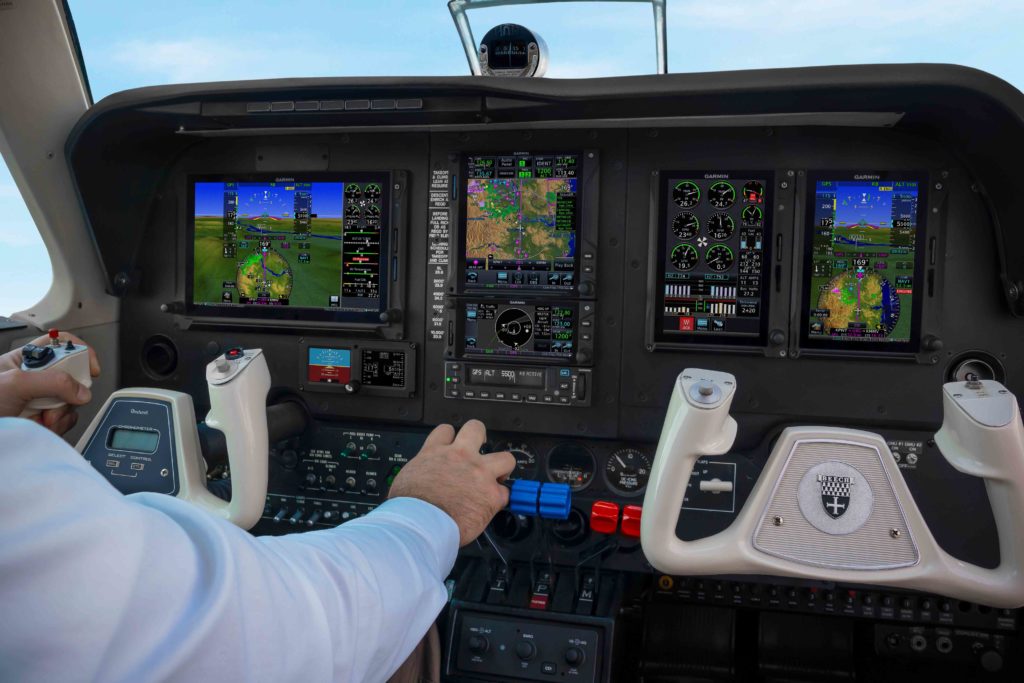
Help manage aerodynamic performance with Smart Rudder Bias
Twin-engine aircraft inherently have aircraft controllability concerns in the event of an engine failure and pilots can expect a significant yaw toward the inoperative engine, resulting in an unstable aircraft state. In addition, due to a sideslip condition and a windmilling propeller, there can be decreased lift on the wing associated with the inoperative engine and simultaneously an increase in drag, all factors contributing to degraded performance and a critical loss in airspeed. Through close integration with multiple onboard Garmin systems, Smart Rudder Bias helps address these major concerns and immediately assists with controllability issues. This gives the pilot time to take the correct action required in order to better maintain positive aircraft control and help keep the aircraft in a safe flight condition.
Positively identify inoperative engine quicker
When the aircraft reaches the manufacturer’s published minimum control speed (VMC) during the takeoff roll, Smart Rudder Bias is automatically armed. Smart Rudder Bias continuously monitors engine parameters using Engine Indication System (EIS) data displayed on a G500 TXi or G600 TXi flight display and activates when the system detects a predetermined power differential between each engine. Once activated, rudder force is dynamically adjusted to aid a pilot in providing enough force to the rudder to help control a sideslip. A yellow annunciator for the associated inoperative engine is conveniently displayed along with autopilot annunciations on the G500 TXi or G600 TXi flight display, helping the pilot identify the issue quicker. Smart Rudder Bias can be deactivated via a panel-mounted switch.
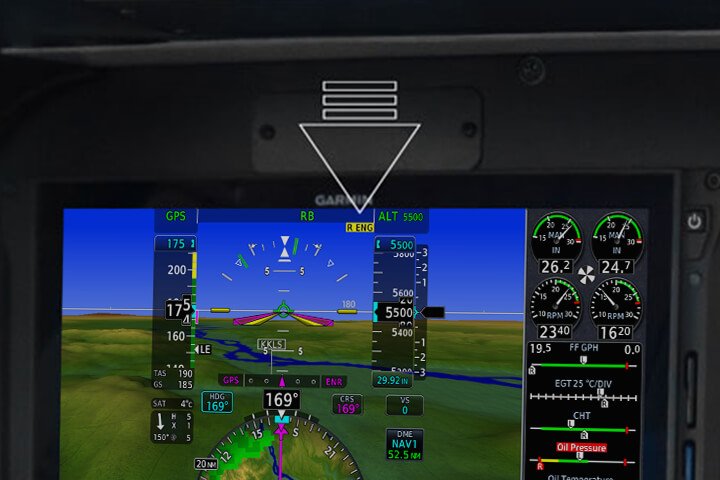
Smart Rudder Bias enhances ESP settings for OEI condition
Garmin’s Electronic Stability and Protection (ESPTM) functions independently of the autopilot, working in the background to help pilots avoid inadvertent flight attitudes or bank angles and provides airspeed protection while the pilot is hand-flying the aircraft. Smart Rudder Bias applies enhanced ESP settings tailored to engine-out flight. Roll protection is modified to help correct for the roll tendency caused by the inoperative engine, while underspeed protection activates at a higher airspeed to help keep the aircraft away from the critical VMC speed and the associated loss of positive aircraft control.
PA-31 certified with GFC 600 – optional yaw trim also available
The GFC 600 is also now certified on select Piper PA-31 aircraft, and an automatic yaw trim option is available. Similar to pitch trim, yaw trim allows for manual rudder trim control with the press of a button, and automatic control of the rudder trim when the GFC 600 autopilot or yaw damper is engaged.
Smart Rudder Bias requires a G500 TXi or G600 TXi configured as a primary flight display (PFD) with EIS, which can be shown as a strip on the G500 TXi or G600 TXi, or on a separate TXi display. Additionally, a GFC 600 digital autopilot with the yaw axis option must be installed. Initial certified aircraft with Smart Rudder Bias capability include the Beechcraft Baron 58 and 58A, as well as the Piper PA-31-300, PA-31-310, PA-31-325, and PA-31-325CR. Additional certifications of Smart Rudder Bias will be forthcoming.
For additional information about Smart Rudder Bias and the Garmin Autonomi family of automated flight technologies, visit www.Garmin.com/SmartRudderBias.
The post Smart Rudder Bias: Safety-Enhancing Technology for Select Twin-Engine Piston Aircraft appeared first on Garmin Blog.
https://www.garmin.com/en-US/blog/aviation/smart-rudder-bias-safety-enhancing-technology-for-select-twin-engine-piston-aircraft/
Garmin Autoland Achieves EASA and FAA Certification on Daher TBM 940
Garmin Autoland is now European Aviation Safety Agency (EASA) and Federal Aviation Administration (FAA) certified in the Daher TBM 940 — the first EASA certification and second FAA certification for the revolutionary technology. It is available as part of the G3000 integrated flight deck and is capable of taking control and landing the aircraft without human intervention in the event the pilot is unable to fly.
“Garmin Autoland continues to gain the recognition and praise of many throughout the world, we are excited to announce yet another milestone – EASA certification of this progressive, forward-thinking technology,” said Phil Straub, executive vice president and managing director of aviation. “As we celebrate this significant achievement in aviation history, I would like to congratulate everyone at Daher, EASA, Garmin and the FAA who have come together and contributed to the development and certification of Autoland, a technology that will have lasting impacts on the safety of the aviation industry.”
In the event of an emergency, the pilot or passengers on board the aircraft can activate Autoland to land the aircraft with a simple press of a dedicated button. Autoland can also activate automatically if the system determines it’s necessary. Once activated, the system calculates a flight plan to the most suitable airport, while avoiding terrain and adverse weather, initiates an approach to the runway and automatically lands the aircraft – without pilot or passenger intervention.
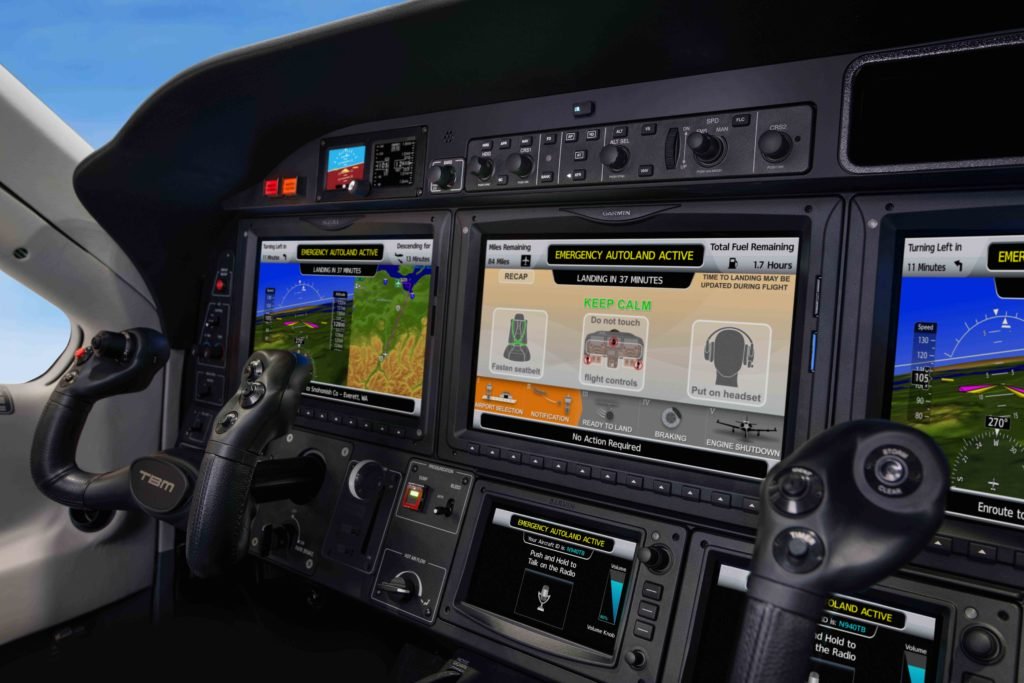
Autoland takes into account a breadth of information and criteria during an activation, including a wide range of performance, operational and environmental factors. The availability of a GPS approach with lateral and vertical guidance to the runway is also required when the system is considering various airports and runways. Even further, the system will automatically communicate with air traffic control, advising controllers and pilots operating near the aircraft of its location and its intentions.
Throughout an Autoland activation, the G3000 integrated flight deck provides passenger-centric visual and verbal communications in plain-language so passengers in the aircraft know what to expect. The flight displays show the aircraft’s location on a map alongside information such as the destination airport, estimated time of arrival, distance to the destination airport and fuel remaining. Airspeed, altitude and aircraft heading are also labeled in an easy-to-understand format. Passengers also have the option to communicate with air traffic control by following simple instructions on the display using the touchscreen interface on the flight deck.
The Garmin Autothrottle system is used to automatically manage aircraft speed, engine performance and engine power so the aircraft can climb, descend or maintain altitude as needed during an Autoland activation. On approach to land, the system initiates a controlled descent to the airport. If the aircraft needs additional time to descend or slow down during the approach, the Autoland system initiates a standard holding procedure. When aligned with the runway, the landing gear and flaps are automatically extended and the aircraft continues its descent. On the runway, automatic braking is applied while tracking the runway centerline to bring the aircraft to a full stop. Engine shutdown is also automated so occupants can safely exit the aircraft.
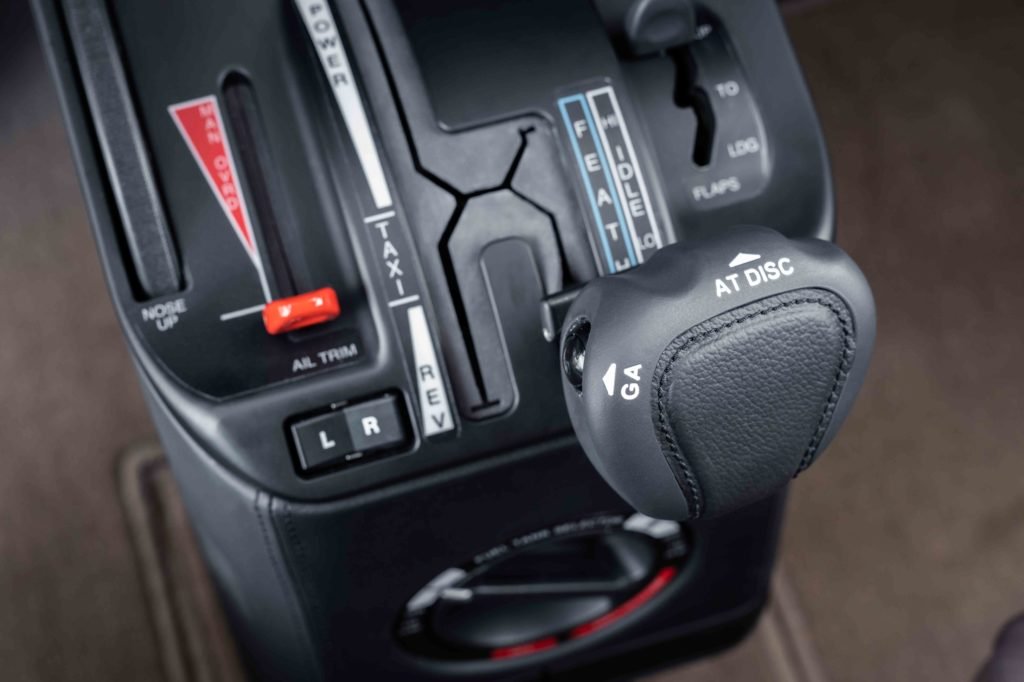
At any time, a pilot can easily deactivate an Autoland activation. With a single press of the “AP” autopilot key on the autopilot controller or the autopilot disconnect button on the controls, an Autoland activation can be canceled. The flight display shows a message that confirms Autoland has been deactivated and in the event of an accidental deactivation, the system shows passengers how to reactivate Autoland if needed.
Garmin Autonomí, a family of autonomous safety solutions, encompasses Autoland, Emergency Descent Mode (EDM) and Electronic Stability and Protection (ESP). These technologies add to the safety enhancing tools and capabilities of a Garmin-equipped flight deck. For example, in the event an aircraft loses pressurization, EDM is capable of automatically descending the aircraft to a preset altitude without pilot intervention to help avert hypoxic situations.
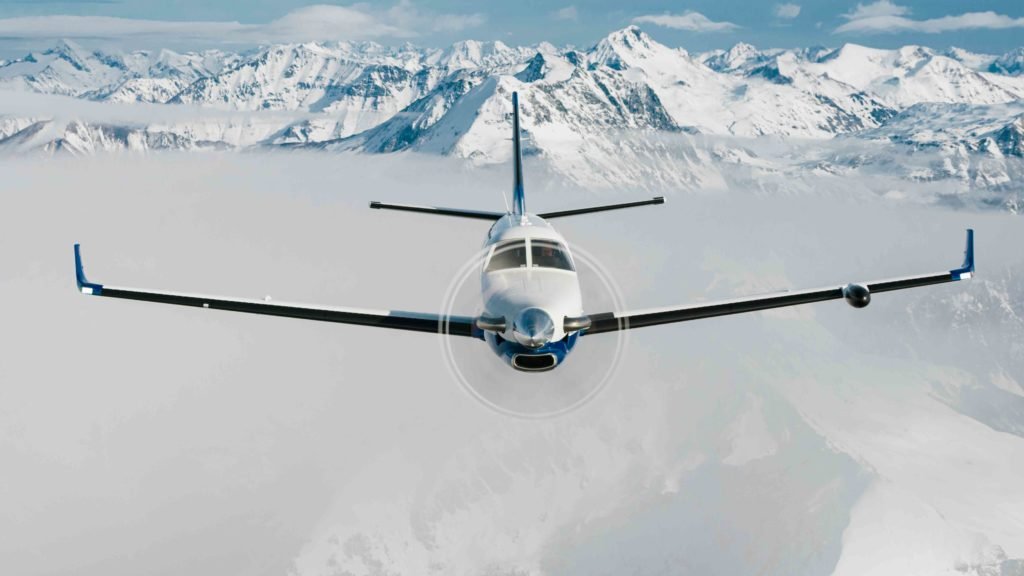
ESP further enhances the Autonomí suite by working to assist the pilot in avoiding unintentional flight attitudes beyond that for normal flight. ESP works in the background while the pilot is hand flying the aircraft to help pilots avoid inadvertent flight attitudes or bank angles. Should the pilot become inattentive while hand flying the aircraft and exceed pre-determined pitch, roll or airspeed limitations, Garmin ESP activates and the pilot will feel pressure on the flight controls that guide him/her back to a recommended flight limit. In addition to certification on the Daher TBM 940, the award-winning Garmin Autoland system has also received FAA certification on the Piper M600 and will soon be available on the Cirrus Vision Jet, with additional aircraft approvals expected to follow. For additional information regarding the Garmin Autonomí family of autonomously activated flight technologies, visit www.garmin.com/Autonomi.
The post Garmin Autoland Achieves EASA and FAA Certification on Daher TBM 940 appeared first on Garmin Blog.
https://www.garmin.com/en-US/blog/aviation/garmin-autoland-achieves-easa-and-faa-certification-on-daher-tbm-940/
Approved Aircraft List Expanded for Autopilots
Our aviation team continues to roll out autopilot approvals for a variety of aircraft for the GFC 500 and GFC 600 autopilots. Several popular aircraft such as the Bonanza B36TC, Cessna T210, Cessna 421C and Piper PA-46 are among the latest additions to a growing list of aircraft approvals, allowing these aircraft owners to experience the superior benefits of a modern Garmin autopilot.
In just three years, we have completed 42 Supplemental Type Certifications (STC) on over 30 popular aircraft, spanning nearly 200 aircraft models between both autopilots, with more aircraft approvals in progress and many more to follow. Each aircraft undergoes a comprehensive flight test program at our flight operations facility, which includes flight testing at a variety of aircraft weight and center of gravity (CG) limits, as well as a full range of altitude and airspeed tests. In addition to standard autopilot functions, features such as underspeed and overspeed protection, Electronic Stability and Protection (ESP ), vertical navigation and take-off and go-around modes are also thoroughly evaluated for each individual aircraft. These complex and rigorous certification processes demonstrate our commitment to bringing highly capable, state-of-the-art autopilots to our customers.
), vertical navigation and take-off and go-around modes are also thoroughly evaluated for each individual aircraft. These complex and rigorous certification processes demonstrate our commitment to bringing highly capable, state-of-the-art autopilots to our customers.
“As Garmin increasingly expands its portfolio of aircraft approvals, demand for the GFC 500 and GFC 600 continues to achieve significant growth,” said Carl Wolf, vice president of aviation sales and marketing. “We are humbled by the popularity of these game-changing autopilots as they have redefined the standard of what aircraft owners should expect from an autopilot and based on the overwhelming demand – our customers agree.”
New aircraft models approved for the GFC 500 autopilot include:
- Beechcraft Bonanza
- Models: B36TC, N35, P35
- Cessna T210
- Models: 210G, 210H, 210J, T210G, T210H, T210J
New aircraft models approved for the GFC 600 autopilot include:
- Cessna 421
- Models: 421C
- Piper PA-46
- Models: 310P, 350P
The full-featured GFC 500 and GFC 600 autopilots provide thousands of existing general aviation aircraft with a simple, light-weight, cost-effective autopilot upgrade path. The GFC 500 and GFC 600 incorporate a solid state attitude source with robust self-monitoring capabilities to provide superior autopilot performance, greater reliability and safety benefits that are similar to the popular Garmin GFC 700 autopilot used in our integrated flight decks. In addition to traditional autopilot capabilities such as altitude hold, vertical speed and heading modes, the GFC 500 and GFC 600 also include altitude preselect, VNAV1, Level Mode, underspeed and overspeed protection and more. Pilots can also select, couple to and fly various instrument approaches, including GPS, ILS, VOR, LOC and back course approaches when paired with a compatible GPS navigator.

As a standard feature on both the GFC 500 and GFC 600 autopilots, pilots receive Garmin Electronic Stability and Protection (ESP), which works to assist the pilot in maintaining the aircraft in a stable flight condition. ESP functions independently of the autopilot and works in the background to help pilots avoid inadvertent flight attitudes or bank angles and provides airspeed protection while the pilot is hand-flying the aircraft.
The GFC 500 autopilot uniquely integrates with the G5 or GI 275 electronic flight instruments for attitude reference. The G500 TXi & G600 TXi flight displays can also be paired with the GFC 500 and the G5 or GI 275 flight instruments, allowing flight director and autopilot modes to be seamlessly integrated on a larger format display. Additionally, GFC 500 and G5 can be used in cooperation with the G3X Touch and the G500/G600 flight displays.
Touch and the G500/G600 flight displays.
For customers who already have a G5 or GI 275 electronic flight instrument, the GFC 500 starts at a suggested retail price of $6,9952 for select aircraft with a 2-axis autopilot. Select aircraft with the GFC 600 autopilot start at a suggested retail price of $19,9952 for a 2-axis autopilot with electric pitch trim.
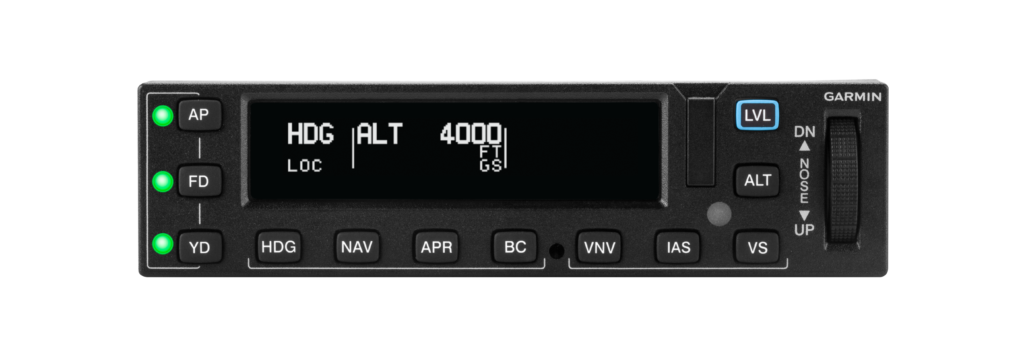
We continue to add additional aircraft models to the growing STC list for the GFC 500 and GFC 600 autopilots. To view the most up-to-date aircraft STC list, to view certification programs that are expected to begin in the next 12-months, or to express interest in a specific aircraft make/model, visit: www.garmin.com/GFC500 or www.garmin.com/GFC600.
Aircraft that are currently certified for the GFC 600 and GFC 500 autopilot are as follows:
GFC 500
- Aviat Husky (A-1, A-1A, A-1B, A-1C-180, A-1C-200)
- Beechcraft Bonanza (S35, V35, V35A, V35B, 36, A36, A36TC*, B36TC, N35, P35)
- Beechcraft Bonanza/Debonair (33, A33, B33, C33, C33A, E33, E33A, E33C, F33*, F33A, F33C*, G33*)
- Cessna 172 (E, F, G, H, I, K, L, M, N, P, Q, R, S, F172E, F172F, F172G, F172H, F172K, F172L, F172M, F172N, F172P, FR172K, R172K)
- Cessna 177 (177B, 177RG, F177RG)
- Cessna 180 (180, A, B, C, D, E, F, G, H, J, K)
- Cessna 182 (E, F, G, H, J, K, L, M, N, P, Q, R, S, T, T182, T182T, F182P, F182Q)
- Cessna 182RG (R182, FR182, TR182)
- Cessna 185 (185, A, B, C, D, E, A185E, A185F)
- Cessna 206 (U206F*, TU206F*, U206G, TU206G, 206H, T206H)
- Cessna 210 (210G, 210H, 210J, T210G, T210H, T210J, 210K, T210K, 210L, T210L, 210M, T210M, 210N, T210N, )
- Grumman (American General) AA-5 Series (AA-5 Traveler, AA-5A Cheetah, AA-5B Tiger, AG-5B Tiger)
- Mooney M20 (J, K, M, R, S)
- Piper PA-28 (140, 150, 151, 160, 161, 180, 181, 201T, 235, 236 and Overhead Trim Models)
- Piper PA-28R (180, 200, 201, 201T)
- Piper PA-28RT (201, 201T)
- Piper PA-32 (260, 300, 301, 301T, 301FT, 301XTC)
- Piper PA-32R (300, 301SP, 301HP, 301T)
- Piper PA-32RT (300, 300T)
GFC 600
- Beechcraft Baron (B55, B55A, C55, C55A, D55, D55A, E55, E55A, 58, 58A, 58P, 58PA, 58TC*, 58TCA*)
- Beechcraft Bonanza (36, A36, A36TC)
- Cessna 182 (P, Q, R, S, T, T182, T182T)
- Cessna Grand Caravan (208, 208B)
- Cessna 340 (340, 340A)
- Cessna 414 (414A)
- Cessna 421 (421C)
- Cessna 425 (425)
- Piper PA-46 (310P, 310P JetPROP, 350P, 350P JetPROP)
- Socata TBM (700, A, B, C1, C2, N (TBM 850)
During the week of AirVenture 2020, we will be hosting a series of free educational webinars and product demonstrations, and feature unique opportunities that will bring the Garmin exhibit experience direct to our customers. Check out the full line-up of virtual AirVenture Oshkosh events at www.garmin.com/OSH2020.
1. GTN series or GTN Xi series navigator required
2. Installation not included
*Certain serial numbers excluded, see authorized Garmin installation center for details
The post Approved Aircraft List Expanded for Autopilots appeared first on Garmin Blog.
https://www.garmin.com/en-US/blog/aviation/approved-aircraft-list-expanded-for-autopilots/
GI 275 Adds GFC 500 Autopilot Compatibility
Our GI 275 electronic flight instrument can now be interfaced with the GFC 500 autopilot, delivering superior in-flight performance and added redundancy when multiple GI 275’s are installed in an aircraft. In addition to GFC 500 compatibility, GI 275 can now serve as a replacement attitude indicator and/or horizontal situation indicator (HSI) to legacy Century II/III autopilots. The GI 275 upgrade also includes the display of outside air temperature, groundspeed, true airspeed and wind on the attitude indicator, as well as data field enhancements on the multi-function display (MFD) page.
“The new GI 275 has revolutionized fixed-wing general aviation aircraft instrument panels and today, we’re excited to grow its capabilities and compatibilities even further to include support for our incredibly popular GFC 500 autopilot,” said Carl Wolf, vice president of aviation sales and marketing. “The GI 275 is capable of providing a staggering amount of flight display information in a lightweight and compact design that is easy to incorporate into a variety of cockpits and with its expansive autopilot interface possibilities, it’s a must-have in every cockpit.”
GFC 500 autopilot compatibility with the GI 275
A single GI 2751 electronic flight instrument can now be used as the attitude source to drive the GFC 500 autopilot, while also displaying mode annunciations and flight director indications. Its bright, high-resolution touchscreen display and wide viewing angle offer superior readability in the cockpit. For added redundancy in aircraft equipped with dual GI 275’s, the secondary GI 2751 is capable of coupling to the GFC 500 autopilot, as well. In the unlikely event of a primary GI 275 failure, the autopilot remains fully functional when paired with the secondary GI 275. Additional redundancy is extended to include the G500 TXi & G600 TXi flight displays, which also allow the GI 275 to couple to the GFC 500 autopilot if needed. Unique to the GI 275 and TXi, pilots will receive a mis-compare notification if the AHRS sources between the two do not align.
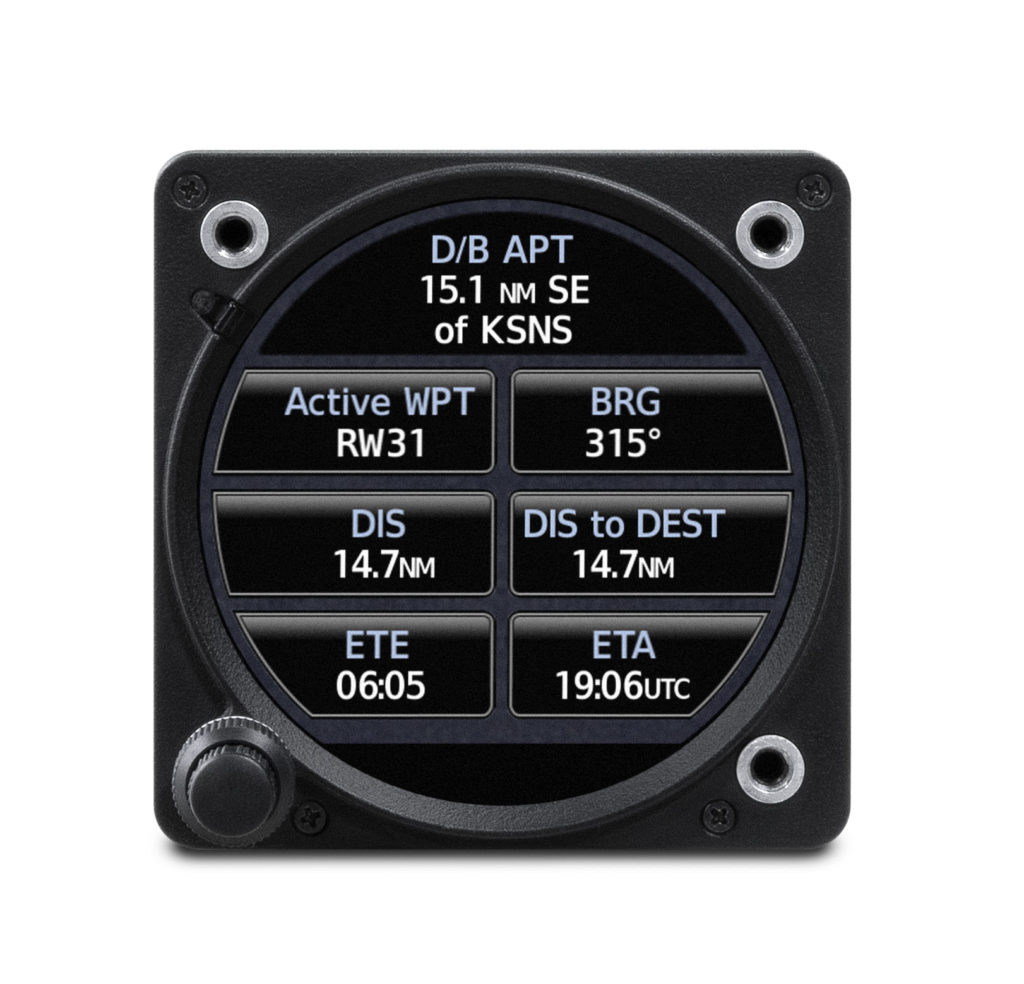
Century II/III autopilot compatibility
The GI 275’s autopilot interface compatibility continues to grow with the addition of the Century II/III autopilots, which can now be paired with the GI 2752 to replace the antiquated attitude indicator3. When replacing the old attitude indicator, pilots receive a reliable electronic flight instrument with additional capabilities beyond the traditional display of attitude information. Furthermore, unlike legacy attitude indicators paired with the Century II/III autopilots, the GI 275 is capable of disconnecting the autopilot in the unlikely event of an attitude upset or in the event of a mis-compare of attitude data between two GI 275’s.
Additional GI 275 display enhancements
The GI 275 electronic flight instrument is capable of displaying outside air temperature (OAT) and true airspeed (TAS) using a temperature probe. Similar to other Garmin products, OAT is displayed along the bottom of the airspeed indicator on the GI 275, while TAS is displayed on the top of the airspeed indicator. Wind speed and direction is also displayed above the heading and autopilot annunciations on the attitude indicator. Additionally, MFD data field enhancements allow pilots to easily edit and change data fields on the MFD page.
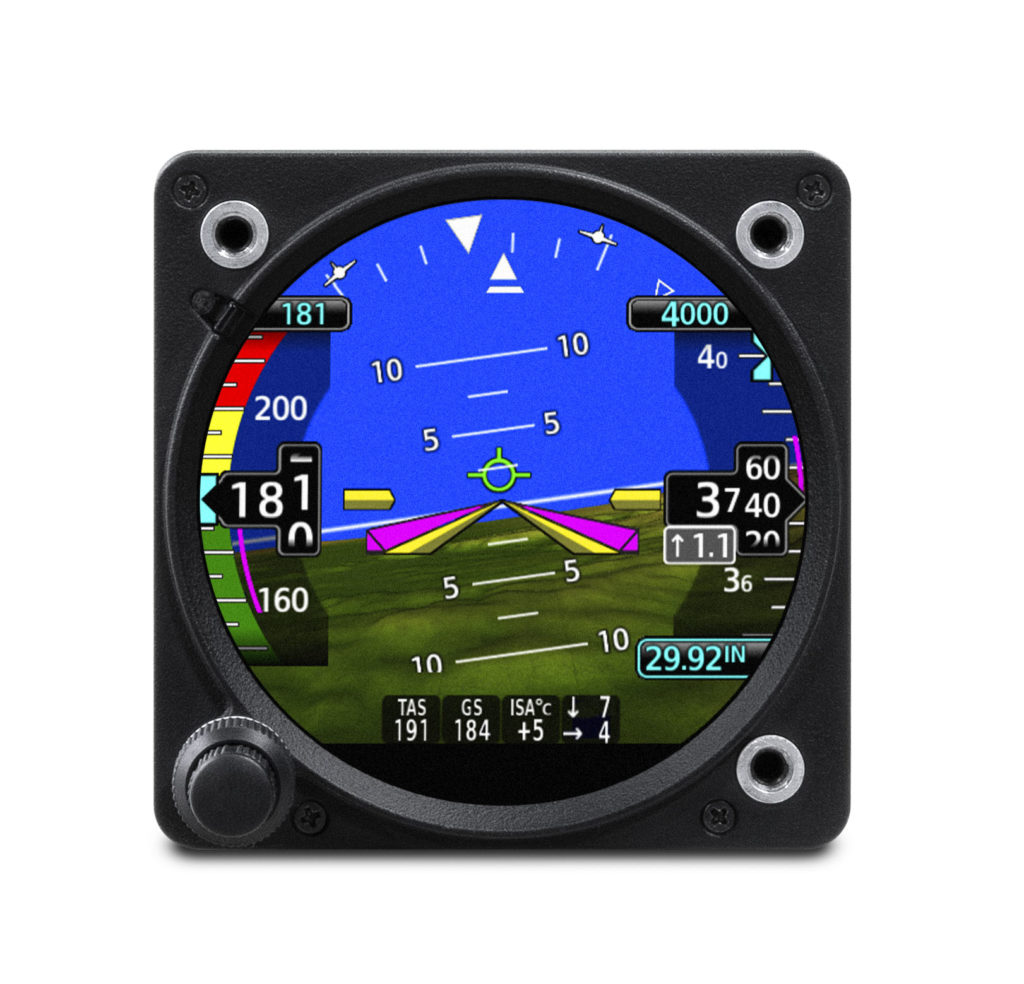
The latest upgrade for the GI 275 is expected to be available in August and pricing for various configurations of the GI 275 can be found on our website. Through July 31, 2020, customers can purchase one GI 275 Engine Indication System (EIS) system for single-engine aircraft or two for a multi-engine aircraft and receive $1,000 USD (per GI 275 system) via a mail-in rebate. Contact a Garmin dealer for additional information. During the week of AirVenture 2020, we will be hosting a series of free educational webinars and product demonstrations, and feature unique opportunities that will bring the Garmin exhibit experience direct to its customers. Check out Garmin’s full line-up of virtual AirVenture Oshkosh events at www.garmin.com/OSH2020. For additional information, visit www.garmin.com/aviation.
1.Requires GI 275 ADAHRS variant.
2.Requires GI 275 ADAHRS + AP variant.
3.Depending on the Century autopilot variant, dual GI 275’s may be required.
The post GI 275 Adds GFC 500 Autopilot Compatibility appeared first on Garmin Blog.
https://www.garmin.com/en-US/blog/aviation/gi-275-adds-gfc-500-autopilot-compatibility/
New Aircraft Models Approved for GFC 500 and GFC 600 Autopilots
Our GFC 500 and GFC 600 digital autopilots have received FAA Supplemental Type Certification in several aircraft models. The GFC 500 and GFC 600 deliver superior in-flight characteristics, self-monitoring capabilities and minimal maintenance needs when compared to older generation autopilot systems. The GFC 500 is intended for piston aircraft, while the GFC 600 is intended for high performance piston and turbine aircraft that have a wide range of speed and performance characteristics.
New aircraft models approved for the GFC 500 autopilot include:
- Aviat Husky
- Models: A-1, A-1A, A-1B, A-1C-180, A-1C-200
- Cessna 206
- Models: U206F (s/n U20602200 and later), TU206F (s/n U20602200 and later), U206G, TU206G, 206H, T206H
New aircraft models approved for the GFC 600 autopilot include:
- Cessna 425
- Models: 425
The GFC 500 autopilot uniquely integrates with the G5 electronic flight instrument or a combination of both the G5 electronic flight instrument and G3X Touch, G500 TXi or G500 flight displays to provide pilots with an economical and modern autopilot solution. The GFC 600 is designed as a standalone autopilot and also boasts superior integration potential when paired with the G500 TXi/G600 TXi or G500/G600 glass flight displays, Garmin navigators, as well as a variety of third-party flight displays, instruments and navigation sources.

The full-featured GFC 600 and GFC 500 autopilots provide thousands of existing general aviation aircraft with a simple, light-weight, cost-effective autopilot upgrade path. The GFC 600 and GFC 500 incorporate solid state attitude with robust self-monitoring capabilities to provide superior autopilot performance, greater reliability and safety benefits that are similar to the popular GFC 700 autopilot. In addition to traditional autopilot capabilities such as altitude hold, vertical speed and heading modes, the GFC 600 and GFC 500 also include altitude preselect, VNAV1, Level Mode, underspeed and overspeed protection and more. Pilots can also select, couple and fly various instrument approaches, including GPS, ILS, VOR, LOC and back course approaches when paired with a compatible GPS navigator.
As a standard feature on both the GFC 500 and GFC 600 autopilots, pilots receive Garmin Electronic Stability and Protection (ESP), which works to assist the pilot in maintaining the aircraft in a stable flight condition. ESP functions independently of the autopilot and works in the background to help pilots avoid inadvertent flight attitudes or bank angles and provides airspeed protection while the pilot is hand-flying the aircraft.

For customers who already have a G5 electronic flight instrument, the GFC 500 starts at a suggested retail price of $6,9952 for a 2-axis autopilot. The GFC 600 autopilot starts at a suggested retail price of $19,9952 for a 2-axis autopilot with electric pitch trim. Pricing is for retrofit installations only. The GFC 500 autopilot will also be available as an option on new Aviat Husky aircraft.
Garmin continues to add additional aircraft models to the growing STC list for the GFC 500 and GFC 600 autopilots. To view the most up-to-date aircraft STC list, to view certification programs that are expected to begin in the next 12-months, or to express interest in a specific aircraft make/model, visit: www.garmin.com/GFC500 or www.garmin.com/GFC600.
1. GTN navigator required
2. Installation not included
The post New Aircraft Models Approved for GFC 500 and GFC 600 Autopilots appeared first on Garmin Blog.
https://www.garmin.com/en-US/blog/aviation/new-aircraft-models-approved-for-gfc-500-and-gfc-600-autopilots/
